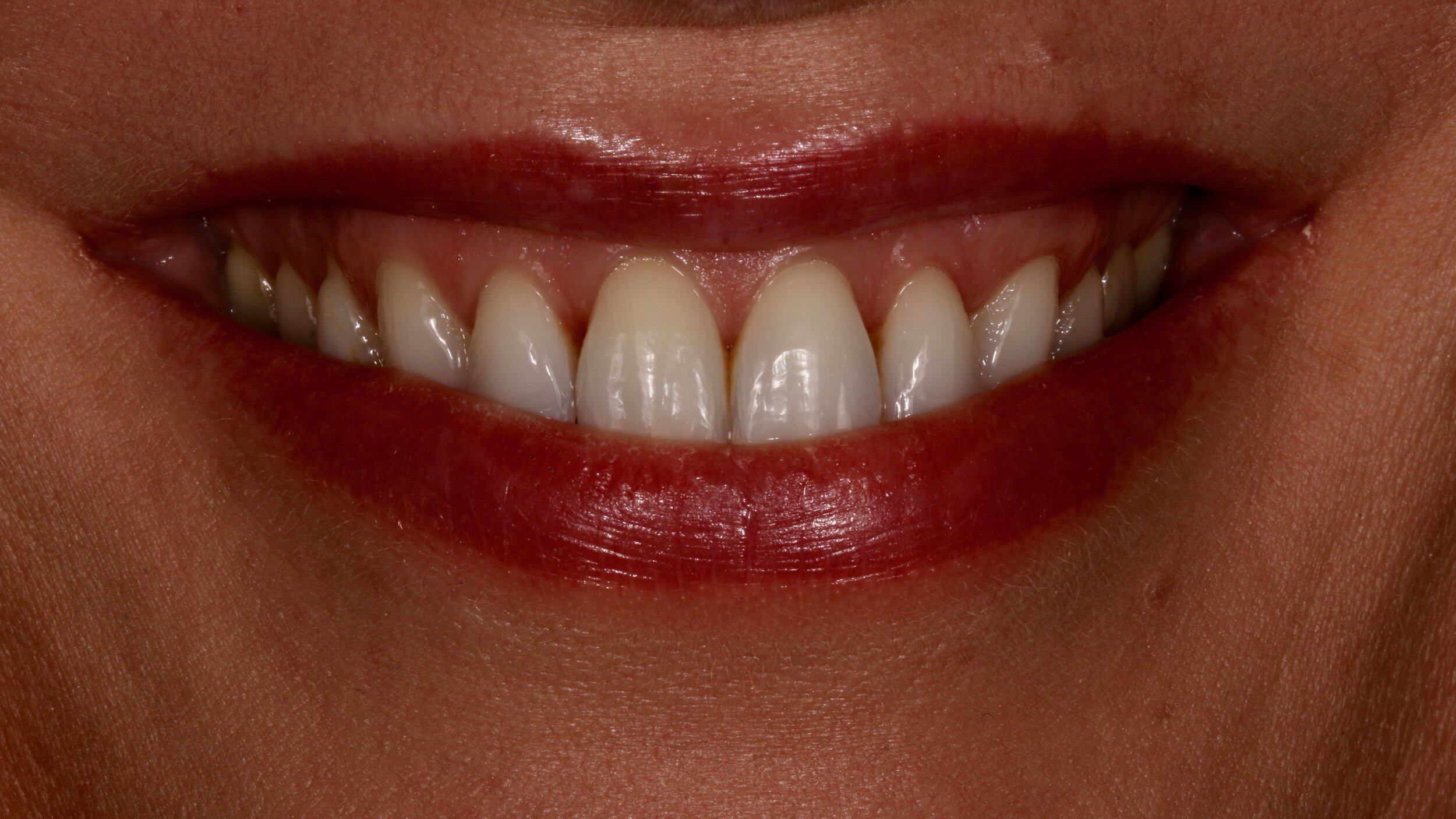
Gum Plastic Surgery
Treatments Options
Recession Coverage Surgery
Recession coverage surgery is a form of gum plastic surgery. The aim is to reduce or totally cover an area of tooth root that has become exposed due to recession. This is done to improve the aesthetic appearance of the gum-line, reduce sensitivity or discomfort and reduce the chance of further recession over time. This is a very delicate procedure that requires considerable skill in order to get the best possible outcome.
Crown Lengthening Surgery
This can make a gummy smile look more natural. It extends the length of the teeth to more natural proportions and is often used in combination with other treatments such as bonding, crowns or veneers to get the best results.

Treatment Goals
Natural Appearance
Make a change to a more natural and aesthetic appearance.
Stronger Gums
More resilient to brushing and improved protection against further recession in the future
Less Discomfort
Improved comfort when brushing and less sensitivity to the cold.
Treatment Planning
Assessment
Both treatments require a full assessment and examination to identify whether they are suitable for every individual case. After the assessment, a treatment plan will be provided that discusses the benefits and risks of the procedure and any additional factors that need to be taken into account. This might include the use of biomaterials to accelerate healing or the use of custom made devices to help with healing or guide surgery.
Trial Smile
When Surgical Crown Lengthening is considered, the final result is ‘tried in’ before the surgery actually takes place. This is to visualise the end result and ensure that the teeth will be long enough to give a natural and aesthetic appearance.
Surgery
Surgery may seen daunting but both are gentle procedures carried out under local anaesthetic so they should be totally pain free. Surgery usually takes 1 - 2 hours and is carried out in a sterile environment. You will be well prepared for what to expect on the day of surgery and the whole procedure should be a stress free and comfortable experience. You will be given full aftercare instructions once the surgery is complete.
Contemporary Practises
Bio-materials
Gum surgery is highly technique sensitive and materials have been developed that might aid in the speed of recovery or improve the result. Emdogain by Straumann is an example of an accelerator treatment.
Gum Grafting
Grafting usually takes tissue from the roof of the mouth. This is because it is the gold standard for gum surgery. There is some discomfort from the site where the graft is taken from but the improvement in outcome is worth it.
Custom Devices
These involve the use of surgical guides or healing plates. Guides help ensure the surgery is carried out the way it was planned from the ‘try-in’ smile when performing crown lengthening procedures. Healing plates are used for graft surgeries and cover the roof of the mouth to improve comfort during the healing phase.
Recession Coverage Surgery
Aftercare
Oral Hygiene
Excellent oral hygiene is very important and using a Chlorhexidine mouthwash twice on the day before the procedure and on the morning of the procedure (if you are not allergic to it) is a good idea and reduces the chance of infection. After the surgery you cannot brush the area until informed that it is OK to do so. Brush everywhere else and use the mouthwash twice a day to keep the surgical area clean.
Stitches
There will be some stitches in place after the surgery. These are usually non-dissolving and need to stay in place for 3 - 4 weeks for recession coverage surgery and around 1 - 2 weeks for crown lengthening surgery. Try not to play with the stitches with your tongue even though they may be annoying.
Food
After these procedures, it’s important not to bite into anything until informed that it’s ok to do so. This is because the gum needs to stay still so that it can heal in the right place. Soft foods such as fish pie, mashed potatoes etc are good examples of what to eat. Try not to look at the area of surgery so as to avoid pulling on the stitches.






